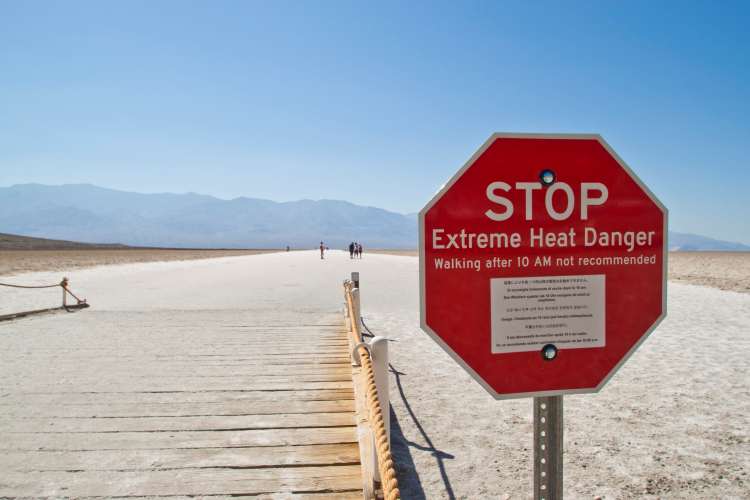
India’s hottest year on record has not just scorched fields and pavements; it has quietly debited the national balance sheet. The India Meteorological Department flagged an unusually long and intense heatwave in May–June 2024, while the health ministry’s surveillance logged tens of thousands of suspected heatstroke cases and a significant number of confirmed deaths. Yet the true burden is larger and more structural: lost labour hours, disrupted learning, and rising healthcare bills. Unless these losses are measured and budgeted for, policy will remain one monsoon behind the climate.
Extreme heat is already reducing the economy’s effective labour supply. The Lancet Countdown India 2024 estimates 181 billion potential labour hours lost to heat exposure in 2023, translating to US$141 billion in potential income losses—heaviest in agriculture. These are not distant forecasts but recent, observed impacts.
Looking ahead, McKinsey Global Institute projects annual GDP losses of 2.5–4.5% by 2030 if adaptation lags, while the ILO has warned that extreme heat could erase the equivalent of 80 million full-time jobs globally by 2030; India’s share could be on the order of 34 million jobs, given its employment structure. The macroeconomic message is direct: heat is a negative supply shock that erodes productivity, depresses incomes, and narrows fiscal space.
READ I GST 2.0: Consumption push risks long-term growth
Classrooms too hot to learn
Learning losses rarely feature in climate accounting, but extreme heat degrades cognition and reduces instructional time. Rigorous evidence from large US datasets shows that hotter school-day temperatures directly reduce learning, with air-conditioning offsetting much of the effect—findings relevant to India’s poorly cooled classrooms.

In 2024, authorities advanced or extended school closures across several states: Delhi ordered early closures and a longer summer break; Bihar shut all educational institutions for over a week as temperatures surged. UNICEF reports that exreme heat-related school disruptions affected hundreds of millions of schoolchildren globally in 2024, with low- and middle-income countries most exposed. For India, counting the “heat-related learning gap” means tracking heat-days, attendance, instructional hours lost, and test outcomes against temperature.
Hospitals in overdrive, budgets under strain
Heatwaves swell emergency attendance and hospital admissions, raising operating costs and crowding out routine care. India’s National Programme on Climate Change and Human Health (NPCCHH) has issued emergency cooling protocols for severe heat illness and strengthened digital surveillance through the Integrated Health Information Platform (IHIP).
Peer-reviewed reviews of Indian and LMIC data point to under-reporting of heat morbidity and mortality and to clear spikes in emergency visits during heat events—costs that most state budgets do not classify or recover. In 2024, public hospitals in Delhi created dedicated heatstroke units as cases rose, illustrating how heat converts quickly into fiscal pressure for state health systems.
Extreme heat and the accounting gap
Official 2024 surveillance distinguishes suspected and confirmed heatstroke deaths—an essential improvement—but the gulf between the two underscores how cause-of-death certification, post-event audits, and comorbidity coding still mask the real toll. The same is true for economic losses: the national accounts do not yet record heat-adjusted labour input, heat-disrupted school days, or heat-attributed health expenditures as separate analytic lines.

Without a consistent framework, ministries plan for yesterday’s climate. India has the building blocks—IHIP dashboards, Heat Action Plans, and ICAP for sustainable cooling—but lacks a common ledger linking heat metrics to budget lines and performance indicators.
A practical ledger for heat
First, establish a National Heat Ledger as a satellite account under the Ministry of Statistics and Programme Implementation, with line-ministries supplying standardised metrics. For work, mandate WBGT-based (wet-bulb globe temperature) logging of heat-risk hours in outdoor and non-cooled indoor occupations, starting with MGNREGA sites, construction, logistics, and agriculture mandis. The labour ministry can embed WBGT thresholds and compensated rest-break schedules in the rules under the Occupational Safety, Health and Working Conditions Code (2020), aligning with ACGIH/NIOSH benchmarks.
Second, in education, the Centre and states should count extreme heat impact just as diligently as exam pass rates: a district-level Heat-Learning Dashboard that tracks heat-closure days, attendance, and assessment scores versus temperature, and triggers heat index thresholds for flexible timings, shaded assemblies, hydration breaks, and remote learning. Evidence that hot school days depress learning—and that cooling mitigates it—makes this a high-return investment.
Third, in health, integrate a costing layer into NPCCHH/IHIP so that every heat-related ED visit or admission is tagged with unit cost, length of stay, and follow-up complications, enabling actuarial estimates for state health budgets and Ayushman Bharat packages. NPCCHH’s clinical guidance on rapid cooling is in place; the next step is costing and procurement norms for cooling equipment and cold-water immersion kits at district hospitals.
Fourth, finance the ledger. The Lancet Countdown India 2024 notes that fossil-fuel subsidies in 2022 were nearly US$58 billion on a net basis; reallocating a fraction to cool roofs, urban shade, school retrofits, and worker shelters would yield immediate health and productivity co-benefits while advancing the India Cooling Action Plan.
Finally, publish the Heat Ledger annually in the Economic Survey, with state-wise scorecards. When lost labour hours, learning days, and hospital costs are visible, executive action follows: work-hour protections can be enforced, school calendars can adapt, health budgets can provision for cooling and training, and cities can prioritise heat-resilient infrastructure.
Extreme heat is not just a meteorological event; it is a macro-risk that drains output, diminishes human capital, and strains public finance. Counting these losses is not an academic exercise—it is the precondition for credible adaptation. The next Budget should treat the Heat Ledger as essential infrastructure, because what gets counted gets managed.
Anil Nair is Founder and Editor, Policy Circle.

